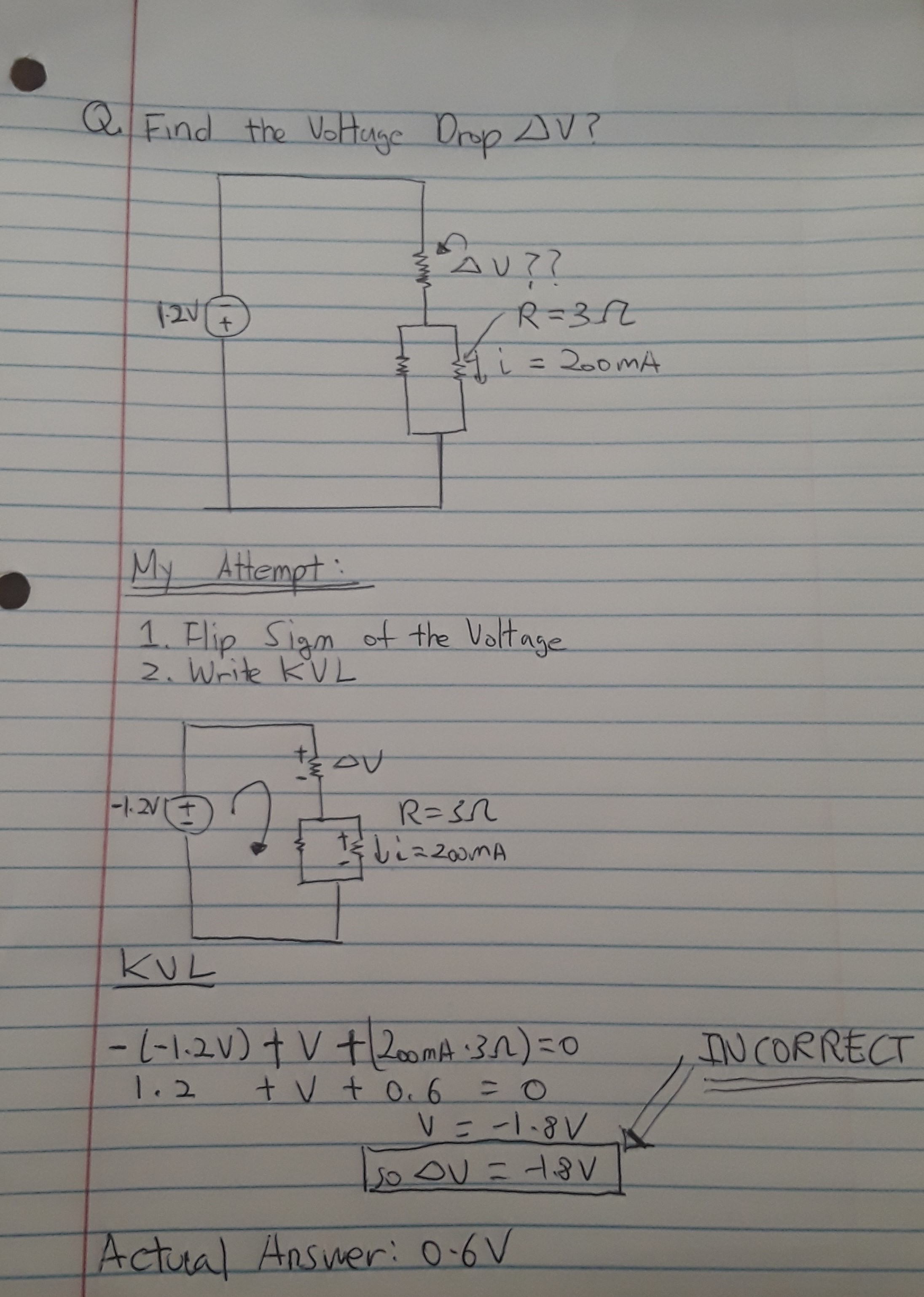Hello, so this is a really simple circuit question that has been bothering me. I know that by simply looking at the circuit and using logic it makes sense that the voltage drop across the resistor(as pointed in the picture) should be 0.6V. But when I actually write the Kirchoff Voltage Law(KVL) around the loop as shown in the picture, I somehow get -1.8V. I am probably messing up my convention. Would someone please explain how I would get the same 0.6V using KVL as well?
Edit: found the answer from my class notes for your refernce. Is the solution assuming opposite convention for how the current flows in the circuit so as opposed to positive to minus terminal is it assuming minus to positive?



